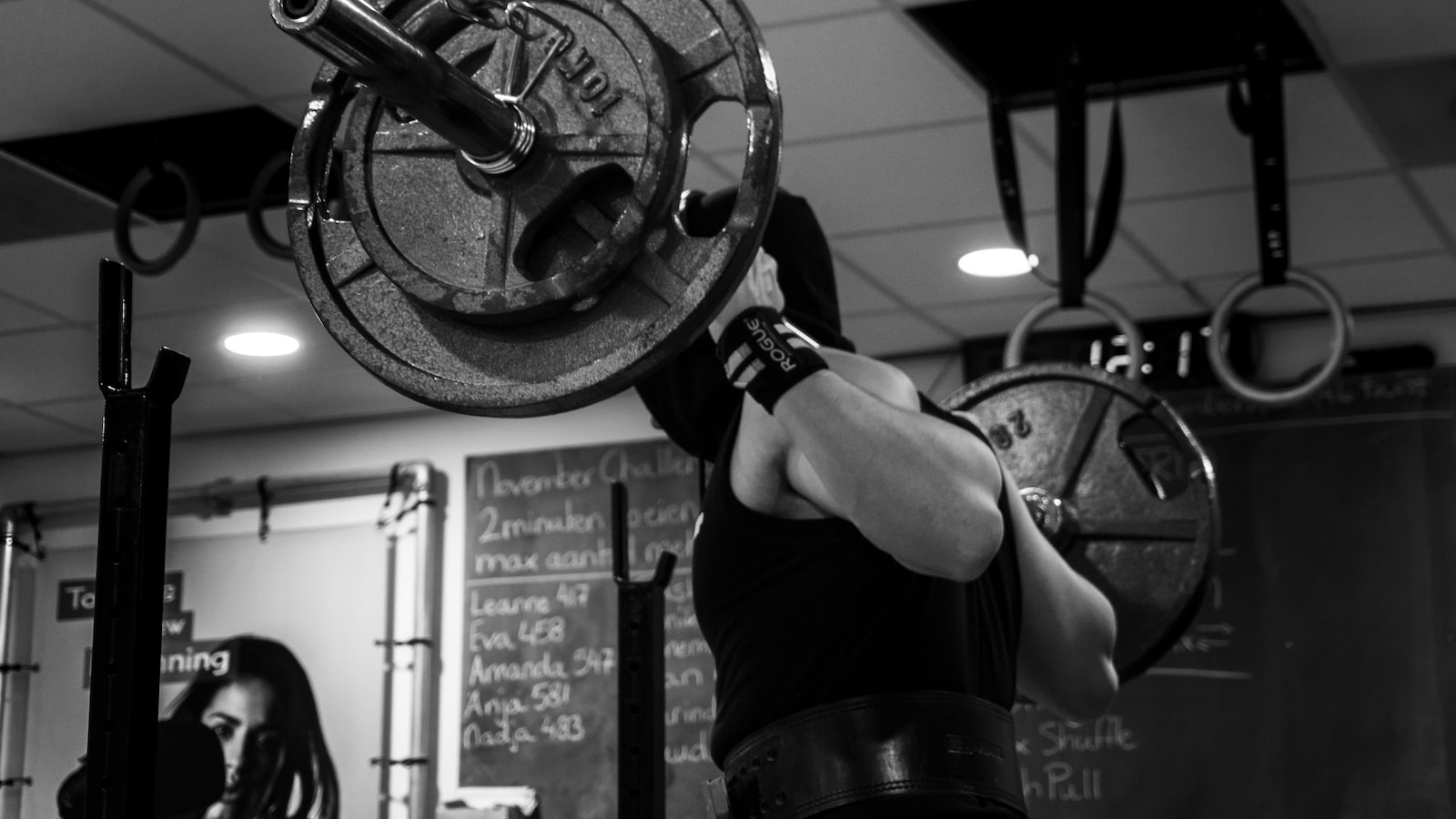
Exploring the Components of Fitness
From hitting the gym to taking a jog in the park, many of us strive to stay fit and healthy. However, it is important to recognize that fitness is much more than just being able to do physical activities. By understanding each component of fitness, it can help you create a fitness plan that is more tailored and effective. In this article, we will explore the different components of fitness and how to incorporate them into your lifestyle for long-term health and wellbeing.
List of Content
- 1. A Healthy Introduction to Fitness
- 2. Understanding the Five Components of Fitness
- 3. Muscular Strength and Endurance
- 4. Flexibility: What You Need to Know
- 5. Cardiovascular Fitness
- 6. Fueling Your Fitness: Nutrition Basics
- You Ask, I answer

1. A Healthy Introduction to Fitness
Fitness is an important part of our daily life as it helps us to live a healthy and active lifestyle. Before jumping head first into a fitness routine, there are some simple steps to get started. Here is an introduction to fitness with tips to getting started.
- Set Goals: It is important to set goals for yourself to give you something to work towards. Whether it is to lose weight, gain muscle, or just to feel better, having goals gives you focus and motivation.
- Start Slow: Start by walking and gradually increase the difficulty and intensity. This helps you build a routine and also prevents injuries.
- Find a Workout You Enjoy: Find something that you enjoy doing that also helps you reach your goals. This makes exercise a lot more fun and you will stay engaged.
- Get Support: It is essential to get support from your family, friends, and coworkers when you embark on a fitness journey. Their help and support can make a big difference.
In addition to the tips above, it is important to stay hydrated and eat healthy to help make fitness even more beneficial. There are also many resources, like workout videos, fitness classes, and gym memberships that can help guide your way.
Fitness involves both mental and physical discipline, but it’s something we can all benefit from. It is important to remember to take your time and find a program that works for your body and lifestyle. Keep your goals in mind and chances are you will reach them and find success.

2. Understanding the Five Components of Fitness
Cardiovascular Endurance: Cardiovascular endurance is the ability of the heart, lungs, and muscles to work together for a prolonged period of time. It involves the ability to use oxygen to fuel the body for activity. Regular aerobic exercise is the best way to increase cardiovascular endurance and can help reduce risk for high blood pressure, stroke, and heart disease.
Strength: Strength is the ability of the body’s muscles to generate force. It can help with everyday activities such as lifting, pushing, and carrying. Increasing strength can help reduce risk for injury, improve self-esteem, and even increase metabolism. Bodyweight exercises, weight training, and gym machines are all great ways to increase muscle strength.
Flexibility: Flexibility is the range of motion in your joints and muscles. Increasing flexibility can help keep your muscles and joints functioning optimally which can reduce risk for injuries. Stretching is the best way to increase flexibility, and can be done before and after exercise. Yoga and tai chi are great forms of exercise that improve flexibility.
Body Composition: Body composition describes the amount of lean muscle mass and fat you have in your body. It is important to maintain a healthy body composition in order to reduce risk for health problems such as diabetes, heart disease, and stroke. Eating a balanced diet and exercising regularly are the best ways to maintain a healthy body composition. Strength training exercises can help you build and maintain muscle mass.
3. Muscular Strength and Endurance
are two components of physical fitness that you should be aiming for when deciding on a training routine. Developing these two aspects of fitness will help you achieve a physically strong and balanced body.
- Muscular Strength: is defined as the amount of force a muscle can generate. Increasing muscular strength is best achieved by performing high intensity exercises such as squats, deadlifts, bench press and shoulder press.
- Muscular Endurance: refers to how long a muscle can sustain a certain amount of force. Endurance activities such as swimming, running, and cycling are best for increasing muscular endurance.
The best way to improve both is to do a combine a combination of both endurance and strength training. This will help you achieve a balanced physique and physical fitness.
Depending on your fitness goals, you can decide on the duration of your workouts and the intensity they should be. For example, if you are looking to increase your muscular strength then focus on heavy, compound exercises. These exercises place a greater load on multiple muscle groups and can help you achieve your goal in a shorter amount of time.
On the other hand, if your aim is to increase your muscular endurance, then focus on lighter weights and higher repetitions. Aim for endurance exercises that are of longer duration as they will help you improve your muscular endurance in the long run.
4. Flexibility: What You Need to Know
Types of Flexible Schedules
There are several types of flexible schedules that employers can adopt in order to make their workplace more accommodating for their employees. These include part-time, job-share, telework, and compressed workweeks. Each of these types of arrangements can be beneficial for the company and its workers, as they can offer the most suitable work arrangements to meet their unique needs and preferences.
Part-Time Schedules
Part-time work schedules are ideal for employees looking to reduce their hours. These arrangements are popular among working parents, those who are caring for elderly family members, and those pursuing additional education or training. Employees typically work three to four days per week, but can negotiate a more suitable timeline with their employer.
Job-Share
Job-share arrangements can be an effective way to increase productivity. This type of flexible arrangement involves two part-time employees who divide up the duties for one full-time job. Employers can benefit from job-share arrangements as it can lead to cost savings, higher employee engagement, and more. As for employees, advantages include having the ability to manage a full-time workload while maintaining part-time hours.
Telework/Remote Working
Teleworking (aka remote working or telecommuting) is an increasingly popular type of flexible schedule. This option involves working from home or another remote location, usually with occasional visits to the workplace. Employers benefit from reduced overhead costs, while employees benefit from the ability to balance their work and personal lives.
Compressed Workweeks
A compressed workweek involves employees working longer, uninterrupted days of work. This type of flexible schedule can involve an employee working four 10-hour days instead of five 8-hour days. This can be beneficial for employees and employers alike, as it can provide employees with more days off each week, while still allowing employers to maintain adequate staffing levels.
5. Cardiovascular Fitness
is a key metric of overall fitness and health. It relies on your body’s ability to efficiently utilize oxygen to power your muscles and ensure your heart and lungs work together like a well-oiled machine. If you exercised strictly for health purposes, it would be wise to focus your attention on improving your overall .
Improving Your
The good news is that there are many activities you can do to improve your . Doing any form of aerobic exercise, such as running or swimming, can help you gain the benefits that come along with better . Here is a list of activities you can do:
- Running
- Swimming
- Kickboxing
- Biking
- Hiking
- Yoga
These activities have proven to be effective ways to improve your over time. Additionally, it is important to stick to whatever activity or activities you choose. Regular exercise not only helps you maintain your gains, but improves your performance as well.
Benefits of
can provide a range of benefits for your body and overall health. It has been linked to lowering your risk of developing serious medical conditions, such as heart disease, stroke, and diabetes. Improved can also contribute to weight loss, improved mental health, and a more active lifestyle.
6. Fueling Your Fitness: Nutrition Basics
Eating the right foods can have a huge impact on your success in fitness. Knowing the basics of healthy nutrition is key to ensure you’re fueling your body optimally for performance and progress.
- Macronutrients are essential to your diet. These are carbohydrates, proteins, and fats. Each macronutrient plays a role in your nutrition so it’s important to understand the differences between each and the recommended amounts of each for your lifestyle.
- Calorie Intake is something that should be monitored depending on your fitness goals. You can calculate your daily calorie needs by taking your Basal Metabolic Rate (BMR) and adding the amount of calories you need to perform your daily activities.
- Meal Timing is key when it comes to fueling your fitness. Eating before and after workout sessions can provide you with the right amount and type of foods you need for optimal performance. Eating small balanced meals throughout the day can help curb hunger throughout the day.
Vitamins and Minerals are just as important as macronutrients. These micronutrients are what your body need on a daily basis in order to function properly. Make sure you are including a variety of different foods in your meals to ensure you’re passing your vitamin and mineral needs.
Healthy nutrition is the cornerstone of fueling your fitness success. Knowing, understanding, and actively practicing the basics can set you up for better results when it comes to your physical fitness.
You Ask, I answer
Q. What are the components of physical fitness?
A. Physical fitness is comprised of several components: muscular strength, muscular endurance, cardio respiratory endurance, flexibility, and body composition.
Q. How do I know if I am physically fit?
A. Everyone has different levels of physical fitness. To assess your fitness, it is helpful to look at how fit you are in each component. You can also use a physical fitness test which measures your performance in different physical tasks.
Q. What are some exercises that can help me improve my fitness?
A. An exercise plan should include a variety of exercises to target each of the components of physical fitness: aerobics, strength training, stretching, and cardiovascular activities. Strength exercises like weight lifting, yoga, and Pilates are great for increasing muscular strength and flexibility, while aerobic activities like running, cycling, and swimming can improve cardio respiratory endurance. It’s also important to include proper nutrition as a part of your routine to ensure your body is getting the energy it needs.
Q. How often should I exercise?
A. Generally, you should aim to exercise at least 3-5 times a week. If you’re just starting out, start with short workouts a couple of times a week and gradually add more as you improve your fitness levels. Make sure to give your body rest days to recover and listen to your body if it’s telling you it’s feeling tired.
Overall, understanding the components of fitness is essential to creating a workout plan that gets you the best results. Even small improvements in your lifestyle, such as adding a few minutes of exercise every day, can go a long way towards improving your health and fitness. Take some time to learn about the components of fitness and how you can use them to reach your goals.

